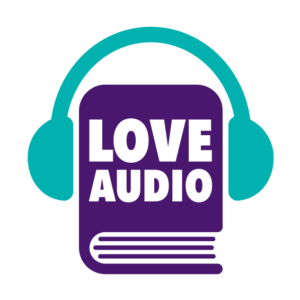Content delivery platforms in publishing, and how to start using them

It has been a few years since online learning crossed the threshold of the corporate world and journeyed into other industries. Education and publishing are two industries that have readily embraced online learning. When I started doing instructional design projects for Education and ELT publishers, I began to see how closely related educational publishing and elearning really are and how one can complement the other. Both these industries have one thing in common – learning content. They differ only in the mode of dissemination and the distribution of content. So it is not difficult for publishers to distribute their content through learning platforms.
The publishing industry was never a stranger to multimedia. Education publishers have used graphics, audio clips and videos to help people learn better. Then came ebooks, audiobooks and epublishing. But are they enough to capture the attention of a generation of digital natives? Consumers of educational content need more than multimedia. This is why publishing companies today see the need for digitisation. When the world was hit by COVID-19, and our ways of working underwent a massive shift, it speeded up the adoption of technology in publishing companies. Publishers began to look more towards digital learning as a way to add value to their customers, enhance their brand image, gain competitive advantage, create a diversified portfolio and meet the demands of the current market. Now is the time to shift from multimedia to interactivity, and this is where content authoring tools and content delivery platforms become crucial.
What advantages do learning platforms offer to publishers?
Learning Management Systems (LMSes) offer many advantages to publishing companies. Firstly, they make creating and distributing media-rich content easy. With some knowledge of design principles and the ability to use an authoring tool, eCourses are simple to create and modify. While print products are difficult to revise, eCourses can be updated with new information and data instantaneously and at a fraction of the cost of print.
Secondly, digital learning allows content creators to use methods of teaching and learning that were previously not possible in print. For example, adaptive learning, where the questions are adapted to the learning level of the learner, cannot be deployed in the print medium. But in online courses it is easy to gauge the level of a learner and ‘adapt’ their learning to their level.
Speaking of pedagogy, an eCourse has the advantage of being more learner-centric than a textbook. The user determines their own learning path which makes elearning more end-user driven. In publishing, the author has more power than the user/learner because they determine the learning path on behalf of the learner. Yes, learners’ needs are taken into consideration but only up to a point.
Thirdly, learning platforms offer the advantage of data and analytics. Earlier, book sales were the only data publishers had. While they were a good indicator of the publishers’ revenue, they offered no insights into learner engagement. With the analytics offered by an LMS it now possible for content creators to see how students engaged with a course, which is the test that most students failed, how many of them abandoned the course and much more. Isn’t this information helpful when authors and editors revisit the eCourse to tweak and fine-tune the content, based on user response?
Lastly, dissemination of content through the online medium can also help with revenues as it helps to address traditional problems of the publishing industry that eat into its revenues – the second-hand book market and illegal piracy. Digital content is locked into an LMS/CMS which requires a password to get in. This is only available on payment. Hence, there is very little chance of piracy. One might argue that passwords can be shared just as books are lent or resold. But a second learner’s unauthorised use of the first learner’s eCourse can play havoc with personalised or adaptive learning, which is a huge disadvantage for the first learner, and this is a good deterrent to avoid password sharing.
How can a publisher start using digital platforms?
The advantages of using a digital platform are indeed many, but how can traditional publishers make the transition? Digital should be seen as an extension of the goals, mission and vision of the company. This is followed by the practical aspects like adopting tools and strategies to apply this philosophy on the ground.
Strategies would include training existing staff, hiring staff who have digital experience, creating and maintaining digital workflows, and adopting authoring tools and LMSes. This puts publishers on a learning curve as it necessitates a whole new way of producing and managing content. That’s why it is important to lay the groundwork by bringing about a mental and physical shift in the way of working both within the publishing company and with vendors of traditional print publications.
Hire digital and tech experts
To begin this transition, publishers need to hire digital and tech experts who have experience in the digital education domain. Courseware engineers and tech experts were traditionally employed by IT firms and technology-driven startups. It is important to make publishing jobs attractive for them because their expertise is invaluable in making the journey into the world of educational digital technology.
Choose and invest in a suitable learning platform
Buying and using a platform for content hosting and delivery is the next most important step in this journey. Publishers need to carry out a needs assessment and zero in on an authoring tool and an LMS to invest in. It can be a tough choice as there are several good options available in the market. Articulate Storyline, Avallain, Learnosity and Adobe Captivate are some of the market leaders. Most content authoring tools provide ready-made interactive activities and editable templates. These are invaluable resources for beginners. They help users understand all available options within the tool and examine various instructional approaches. Support from organisations that create and market the tools can go a long way to help publishers that are newly entering the digital world. Publishers can ask for free trials, play around in the sandbox and get training for staff before deciding to adopt a platform.
Adopt a mental shift along with a process shift
Finally, digital has to be adopted by the entire the organisation as a way of life. This will ensure a mental shift into digital along with the process shift into adopting digital products. Companies can prepare their staff for the shift by encouraging them to become more digitally savvy. Digital learning expands into everyday technologies, so people can be encouraged to use and get comfortable with social media, social networks, chats, play interactive video games and take online courses. In-house blogs and messengers can lead the way. Many gaming principles can be carried over to learning design. Taking online courses on any subject helps to get acquainted with strategies that work in an online delivery medium. In fact, there are also several free authoring tools online for those interested in learning a little more.
Other industries like banking and restaurant businesses have adopted technology and reaped the benefits of being technology driven. Ask yourselves when was the last time you visited a brick-and-mortar bank? Most of us use internet banking, mobile banking and cash machines to meet our banking needs. That is because the banking and the insurance industry has successfully leveraged the power of technology. It is time publishing companies do the same to help consumers take advantage of interactive content and gain new skills or qualifications.
Paromita Sengupta is Senior Manager – Instructional Design at Newgen Publishing UK. She has worked for many years in elearning and IT companies designing learning modules for corporate training as well as K-8. You can find Paromita online at LinkedIn and Twitter.





Article by Paromita Sengupta on digitisation of Education & Publishing Industry is very interesting to know the in-depth of the system, as has already brought revolution in total Education concept of world.
Aged people like us wonders the amazing prospects of the online learning, ebooks, audio books etc. & their innumerable aspects of spreading the real education amongst society & future generation.
Best wishes & Regards.